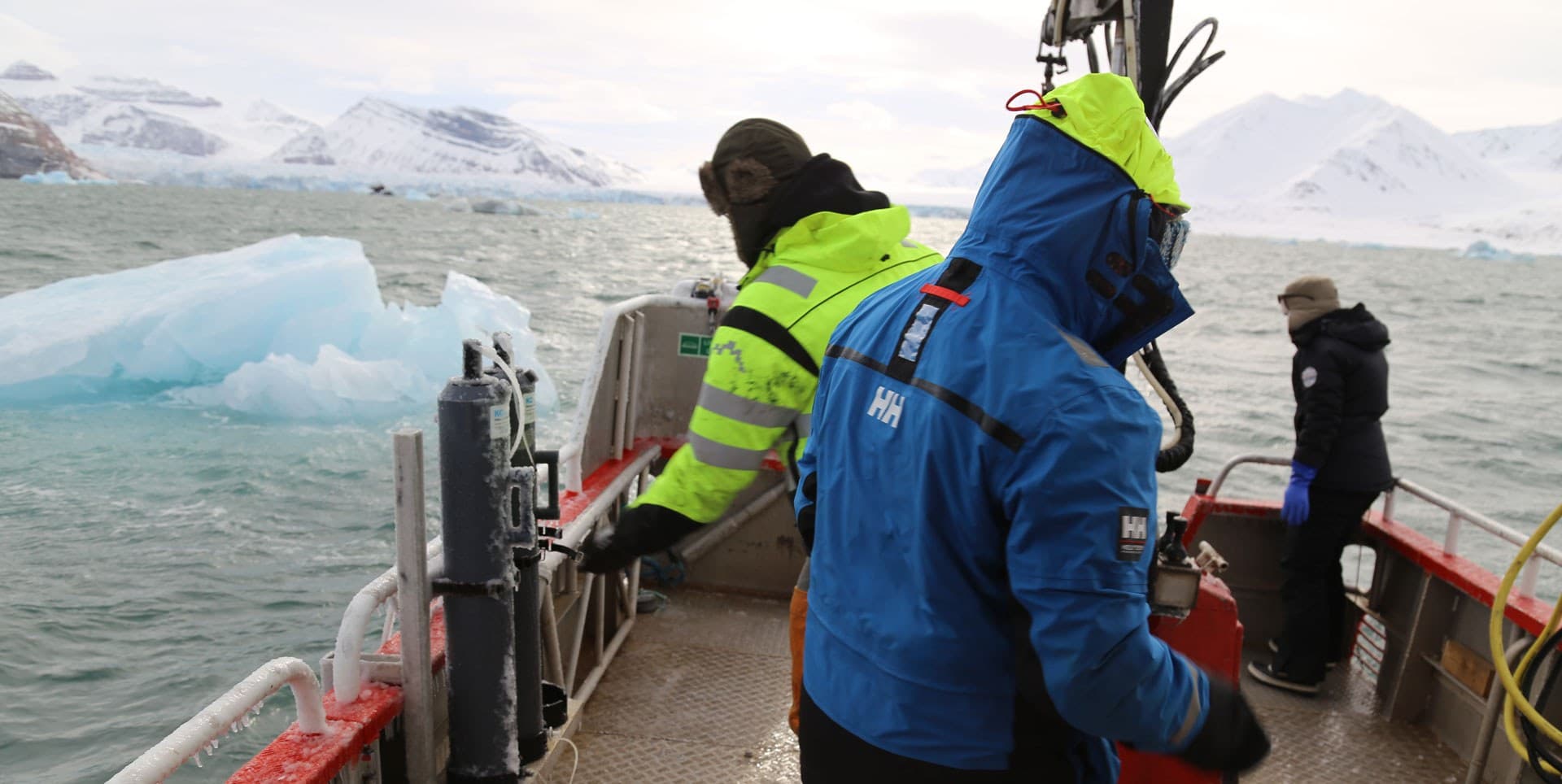How to sample for microplastics

This activity explores sampling techniques used on Arctic field science, in this case estimating the amount of microplastic in an area of sea ice. It develops students' working scientifically skills.
Ages 12+
(science lab)
20 minutes
(15 minutes preparation)
Part of:
AXA Ocean EducationThis activity is a fun way of learning about how scientists consider appropriate sampling and conduct a fair test to assess how much microplastics are in the Arctic.
Preparation
You will need to create trays of ice with simulated ‘microplastics’ to represent a ‘region of the Arctic’. Your students will be challenged to sample and quantify amount of ‘microplastics’ in that ‘region of the Arctic’. To make these ‘regions of the Arctic’, freeze a known amount of lentils or rice in brine water (at least 32g salt per litre of water) in flat containers, such as baking/roasting trays.
Fill the trays to about 2cm in height and consider distributing the ‘microplastics’ unevenly through the tray to make accurate sampling more of a challenge for your students. Don’t forget to record the amount of ‘microplastics’ (either number of pieces or grams) that you used in each tray, which can be the same or different for each group again to challenge your students.
Activity steps
- Decide where you want to sample from your Arctic region. Record a description of the sample in your data table.
- Extract ice sample from the tray using a spoon or apple corer, and place it on a piece of filter paper.
- Label the piece of filter paper with the sample number, and using the warmth of your fingers melt the ice.
- Count the number of microplastic particles, and record this in your data table.
- Repeat the steps with each of your samples.
- Then use the quantity of the microplastics you found in your samples to help you estimate the quantity of microplastics in your Arctic region. Remember you sampled only a small part of your region, so you’ll have to do some calculations to estimate the amount of microplastics in the region.
Activity steps (advanced)
- Decide where you want to sample from your Arctic region. Record a description of the sample in your data table.
- Extract ice sample from the tray using a spoon or apple corer, crush it, and place it into a boiling tube.
- Using the clamp to hold the boiling tube, carefully melt the ice sample using the Bunsen burner or hair dryer.
- Label a piece of filter paper with the sample number, weigh it on the scale. Then fold it into a funnel. Consider why we must weigh the filter paper.
- Hold the funnel over a beaker and pour the melted sample through the filter paper.
- After the sample has been filtered through, weigh the filter paper with the microplastics. Record the mass in your data table.
- Calculate the mass of the microplastics in the sample.
- Repeat the steps with each of your samples.
- Then use the mass of the microplastics you found in your samples to help you estimate the quantity of microplastics in your Arctic region. Remember you sampled only a small part of your region, so you’ll have to do some calculations to estimate the amount of microplastics in the region.
More ideas
Students should also consider the following questions:
- How close was your estimate to the actual quantity of ‘microplastics’ in the Arctic region you had? If you were close, what made your strategy successful? If you were not close, what would you have changed in your sampling strategy?
- If you had to quantify the amount of ‘microplastics’ in the whole Arctic Ocean, what would you do? How would you design your investigation to be more confident that the amount you are reporting is accurate?
- Are there other questions you would want to ask about the microplastics in the oceans? What are they?
Brought to you by

